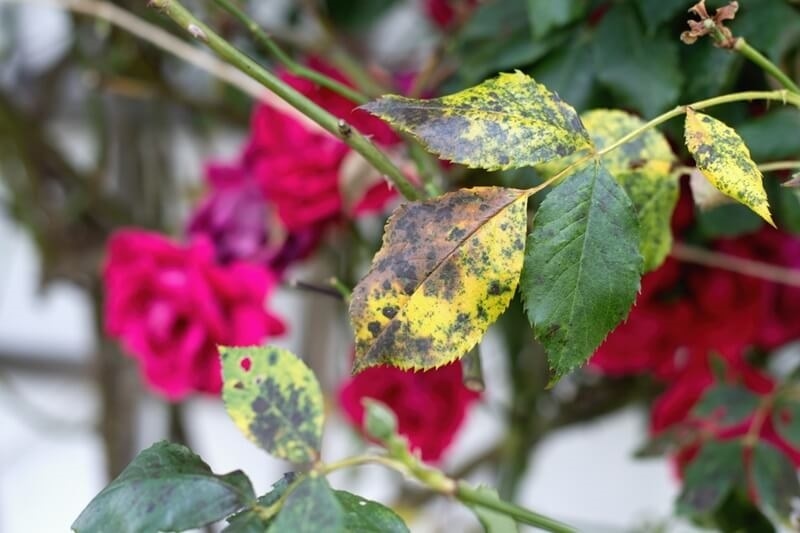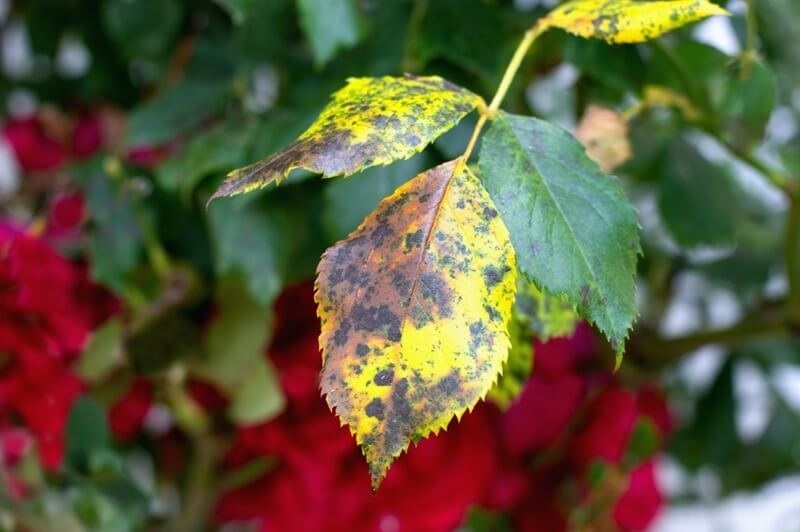
Roses have always been the glory of every garden, applauded for their delicious aroma and everlasting beauty. When those shiny green leaves start to exhibit black, circular areas, it is an obvious indication that black spot disease has taken over. This typical fungal disease can become a massive infection on your rose bushes in a very short time, which results in the plants getting weak and yellowed.
Luckily, with a small effort and a proper care routine, you will be able to not only deal with the disease but also to bring your roses back to their full health.
This disease refers to a fungus called Diplocarpon rosae, which likes damp and warm places. At the beginning, it manifests itself as tiny spots on the leaves that are black or purplish in color and are usually accompanied by yellow halos. If the infection is not dealt with at this stage, it will escalate quickly, and the leaves will even fall off the plant prematurely.
This disease does not only disfigures the roses but it also limits their capability to carry out photosynthesis, which results in the weakening of the whole plant. Consequently, the roses will have a hard time making their bright flowers grow if there are not enough healthy leaves on them. The best protection for the plants lies in early symptom recognition and quick action.
A common problem faced by gardeners is the difficulty in distinguishing black spot disease from other fungi, such as powdery mildew. The proper treatment depends on the correct diagnosis.
Here is how you can tell them apart:
Telling symptoms and signs can help you to identify them correctly even in the early stages and treating the fungus won't take you long then.

Knowing what brings about black spot disease goes a long way toward its prevention. The fungus can be transported in water splashes, on contaminated pruning tools, or on fallen leaves at the foot of the plant. Wetness is mainly to blame—if water stays on the leaves for a certain period of time then it will give the fungus the ideal place to grow.
Some of the typical reasons for this problem are:
You can lower the chances of the disease attacking your plants just by correcting these habits.
Do not go for chemicals right away; instead, opt for natural remedies first. Genuinely, these methods are less expensive, more eco-friendly, and less harmful to the garden’s environment.
First of all, cut off the infected leaves and canes. Do it in a way that you are sure there will be no spores left because they can grow in winter and at that time you can be re-infected.
A natural solution to this problem is to mix one teaspoon of baking soda, a few drops of mild dish soap, and a liter of water. Spray it on the affected leaves weekly to control the spread.
Neem oil can be both an anti-fungal and an insect repellent at the same time. It supports the black spots on the rose leaves by killing the fungal spores' activity, and at the same time, it keeps away the pests. Do it just before sunrise or sunset to be safe from the leaf burn.
Don't crowd your roses, but rather give them enough space to get good air circulation. Good airflow helps leaves dry faster, not giving the fungus a chance to thrive.
These natural remedies can help reduce the severity of infections and promote overall rose leaf health tips worth practicing year-round.
If the natural remedies fail to keep the issue under control, it is time to resort to a targeted fungicide treatment. The options vary from organic to chemical-based and each of them has its benefits.
You can choose the best fungicides to combat black spot with these main components:
Regardless of whether you are using any type of fungicide, it is imperative to always abide by the instructions on the label. Perform the application in dry weather, taking care to ensure both sides of the leaves have been covered. Under humid conditions, you should repeat the procedure every 7–10 days to maintain effectiveness.
Pro tip: To avoid resistance, rotate different fungicides every few months.
An effective method for controlling the disease is to choose varieties of roses that are bred to be resistant to this disease. These plants are bred to resist the fungus and need far less spraying.
The most popular varieties of resistant roses are:
By buying this kind of hardy plant, you will have lovely flowers without the constant fear of a fungal attack.
Watering and pruning with care are the key first steps to keeping the black spot disease away. Even small changes in your daily gardening routine can have a significant impact.
With these measures, you not only prevent disease but also get bigger, greener, and stronger plants.
Taking care of your roses often needs year-round effort. However, preventing black spots and other challenges should follow the rose leaf health recommendations.
With diligence, your roses will stay healthy and continue to bloom year after year.
Every rose grower has to encounter problems, but black spot disease will not take your garden down. By learning to recognize the symptoms of black spot vs mildew, using natural or chemical treatments as required, and planting black spot-resistant roses, you can have healthy plants all season long.
If you add good pruning, smart watering, and nutrient-rich soil to this, you will have the benefit of tough roses that bloom not only with color but also with fragrance.
This content was created by AI